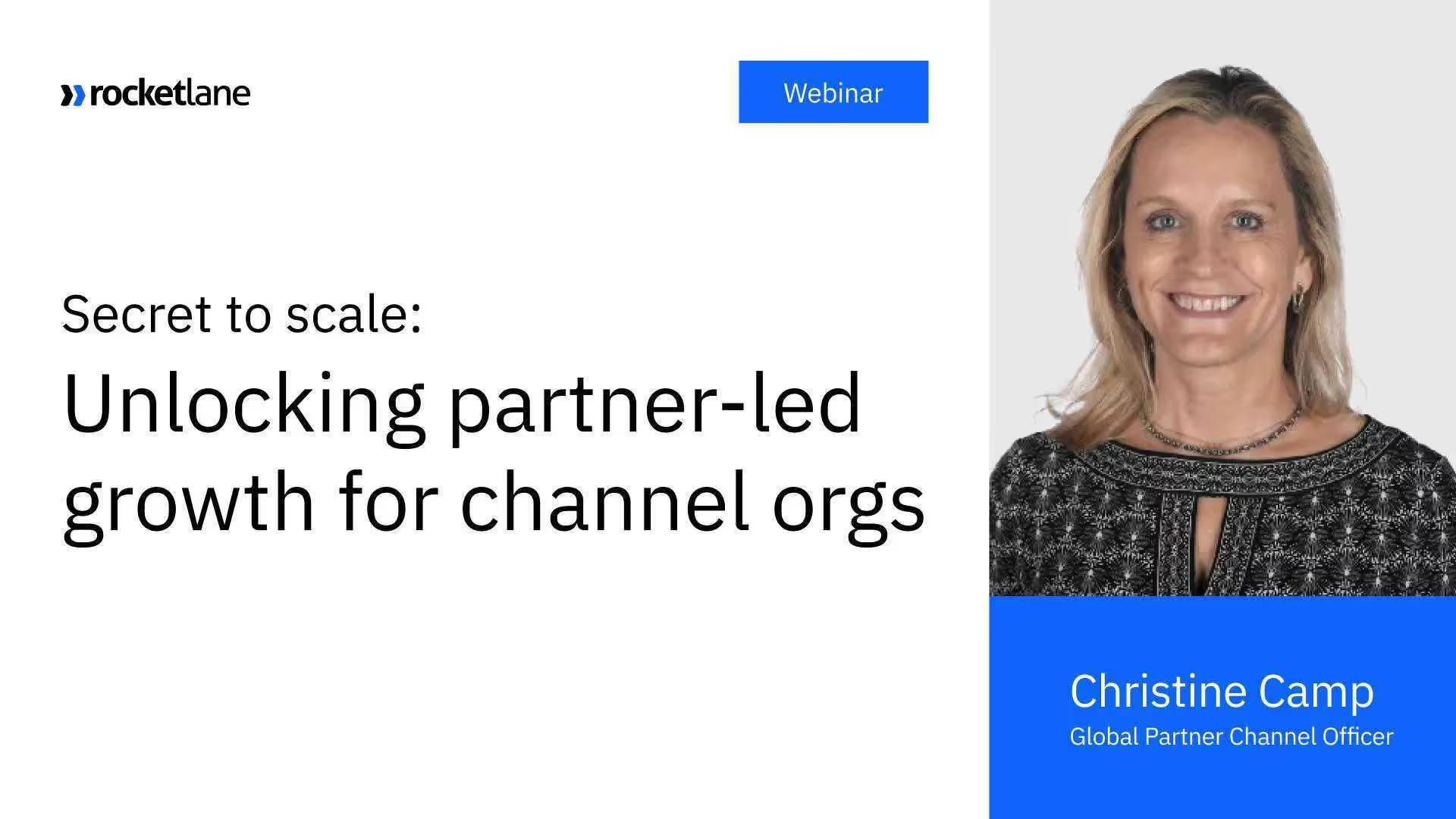Organizations today have two primary options for sustained growth: cutting operational costs or finding new revenue sources. While much has been discussed about doing more with less, this session focuses on a less-explored avenue of partner channels.
Leveraging the expertise of partners allows organizations to target specific industry verticals, scale with shared responsibilities, and increase revenue at both product and service levels. Despite the apparent benefits, working with partners presents its own set of challenges, such as identifying the right partners, designing incentive programs, ensuring quality adherence, and staying on top of the work.
To provide insights into overcoming these challenges and setting up a successful partner program at your organization, we invited Christine Camp, a seasoned partnerships expert to share her insights. With over 15 years of experience in strategic partnerships, revenue growth, and channel leadership, Christine's track record includes pioneering partner programs, onboarding hundreds of partners globally, and generating significant partner revenue for companies like Palo Alto Networks, NTT Communications, and Verizon. Her transformative leadership has accelerated revenue growth by unlocking the full potential of partner-led strategies.
Christine's session included tips and tricks for helping organizations strategically align with partners to navigate market changes and accelerate growth. Here is a brief summary of the key takeaways.
Why engage with partners for your client delivery?
Partnering has evolved from an afterthought to a pivotal strategy for organizational growth. Today, partnering is a hot topic for organizations of all sizes, and for good reason.
Partners bring a unique set of advantages to the table. They are the executors, leveraging insights from a market that is exponentially broader and more diverse than any single company can perceive. This collaboration is a force multiplier, amplifying the impact of your efforts in the market. The agility of partners is another key asset—essential for navigating diverse markets, localizing strategies, and seamlessly integrating new solutions.
In essence, partners are your one-to-many strategy, the masses complementing your company's core strengths. Partnership is not just about scale; it's about leveraging the skills, scalability, and agility that partners inherently possess.
How do you build a partner program?
Building a robust and successful partner program is akin to creating a masterpiece—requiring a careful blend of repeatability, prioritization, alignment, and strategic alignment.
1. Repeatability and prioritization
Repeatability is the cornerstone for maximizing investments in business. Establishing repeatable processes is a common goal for companies, ensuring efficiency and effectiveness. To achieve this, prioritization is key. Organizations can build a foundation that sets the stage for long-term success by identifying priorities. The journey involves prioritizing, building, and ultimately maximizing on the established repeatability.
2. Alignment and leadership
Central to the success of any partner program is alignment and leadership. It's the hard part that needs to be addressed. For organizations venturing into the realm of partner ecosystems, executive leadership alignment is non-negotiable. The commitment must be genuine, moving beyond trends or quick routes to market. A pivotal suggestion is the appointment of a Chief Partner Officer—a role gaining prominence across industries. This leadership figure ensures sustained commitment and strategic guidance essential for long-term success.
3. Metrics and revenue
Data reigns supreme in the modern business landscape, making metrics and revenue a critical focus. Metrics must go beyond people and performance, encompassing a holistic view that breaks down silos. By defining and tracking metrics tied to revenue, organizations gain the necessary insights to justify and optimize their investment in partner programs.
4. Partnerships and strategy
The journey from a direct to a partner-led organization requires thoughtful partnerships and a strategic shift. The initial focus might be on the number of partners, but as the organization matures, the emphasis must shift to quality over quantity. Understanding the types of partners required, considering geography, and fostering collaboration among partners become crucial elements. By being consistent over time, organizations can evolve from being 50% partner-led to a future state where 80% of their success is driven by strategic partnerships.
Internal vs. external alignment: Understanding how partners fit into your GTM strategy
Navigating internal and external alignment is key to unlocking partner-led growth. Acting as the maestro of this intricate symphony, channel leadership must embrace a delicate balancing act, harmonizing internal company directives with the external partner landscape.
Building buy-in and trust becomes paramount, as the journey involves transitioning mindsets and fostering collaboration, whether within services or support teams. Thought leadership extends beyond tactical implementation, requiring a unified front across all facets of the organization. Externally, collaboration with finance and legal teams is crucial, demanding an investment to navigate budgets and plan strategically. It's about more than just coordinating technology initiatives or training partners; it's a bilateral data exchange. The data collected, aggregated, and reported back is not just a measure of success but a fundamental part of program requirements. This integration spans every level of the company, ensuring that the channel organization becomes a cohesive and integral part of the enterprise's fabric. In the pursuit for partner-led growth, mastering this alignment is not just a strategy—it's the melody that orchestrates success, a symphony of internal cohesion and external collaboration.
How to execute a partner program at your organization?
The practical aspects of executing a successful partner program within your organization involve two important steps: enablement and governance. Both these steps contribute significantly to navigate the complexities and ensure the seamless execution of your partner initiatives.
Partner enablement
At the heart of partner success lies the pivotal element of enablement and training. It's the cornerstone that sets high-performing partners apart. To stand out in a crowded marketplace, you must innovate and demonstrate a commitment that resonates with your partners. Crafting a comprehensive framework—from pre-sales to post-sale technical aspects—is essential. This methodology becomes the beacon that guides partners, showcasing your commitment and the attainable goals you share. Trainingis also important, ensuring partners invest their time in understanding and aligning with your best methodology. Consolidating tools seamlessly and maximizing automation streamlines the entire opportunity lifecycle, fostering efficiency and effectiveness.
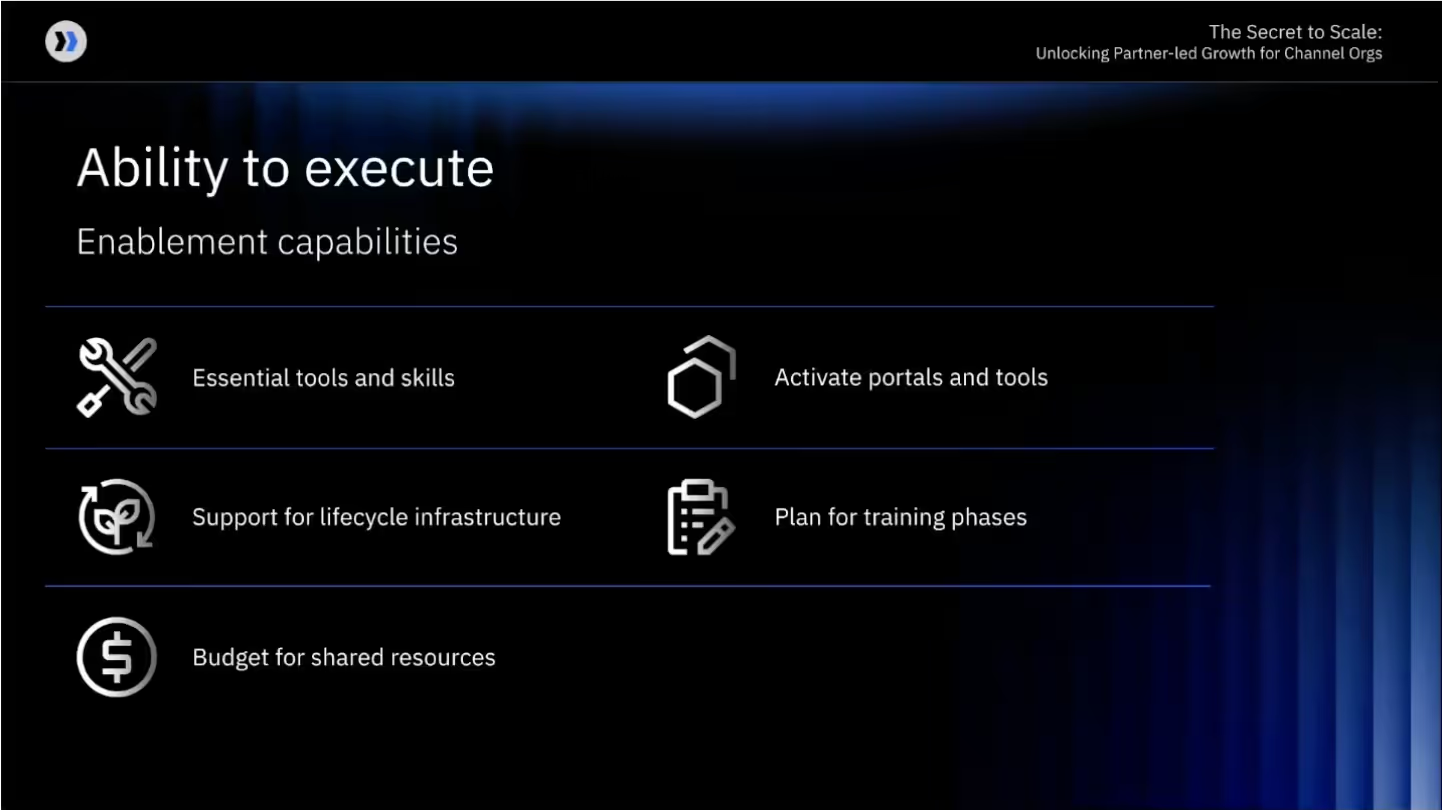
Partner governance
Once commitment, metrics, and enablement are in place, the governance aspect ensures a continuous cycle of success. Dedicated partner teams are indispensable for tracking, innovating, and expanding on successes. In a collaborative selling plan that unites channel, direct sellers, and business development teams, the channel people play a vital role. Monthly and quarterly engagements, separate from larger events, become essential to keep partners on track. This dedicated effort includes Customer Satisfaction (CSAT) surveys, and a high watermark for validation. Here, the importance of integrating data becomes evident. Tools like Rocketlane seamlessly connect partner data to customer survey reporting. This holistic approach, incorporating meticulous project management and streamlined calendaring through APIs, is the key to achieving partner success at every level. The integration of these elements marks the pathway to a harmonious and effective partnership, ensuring sustained growth and customer satisfaction.
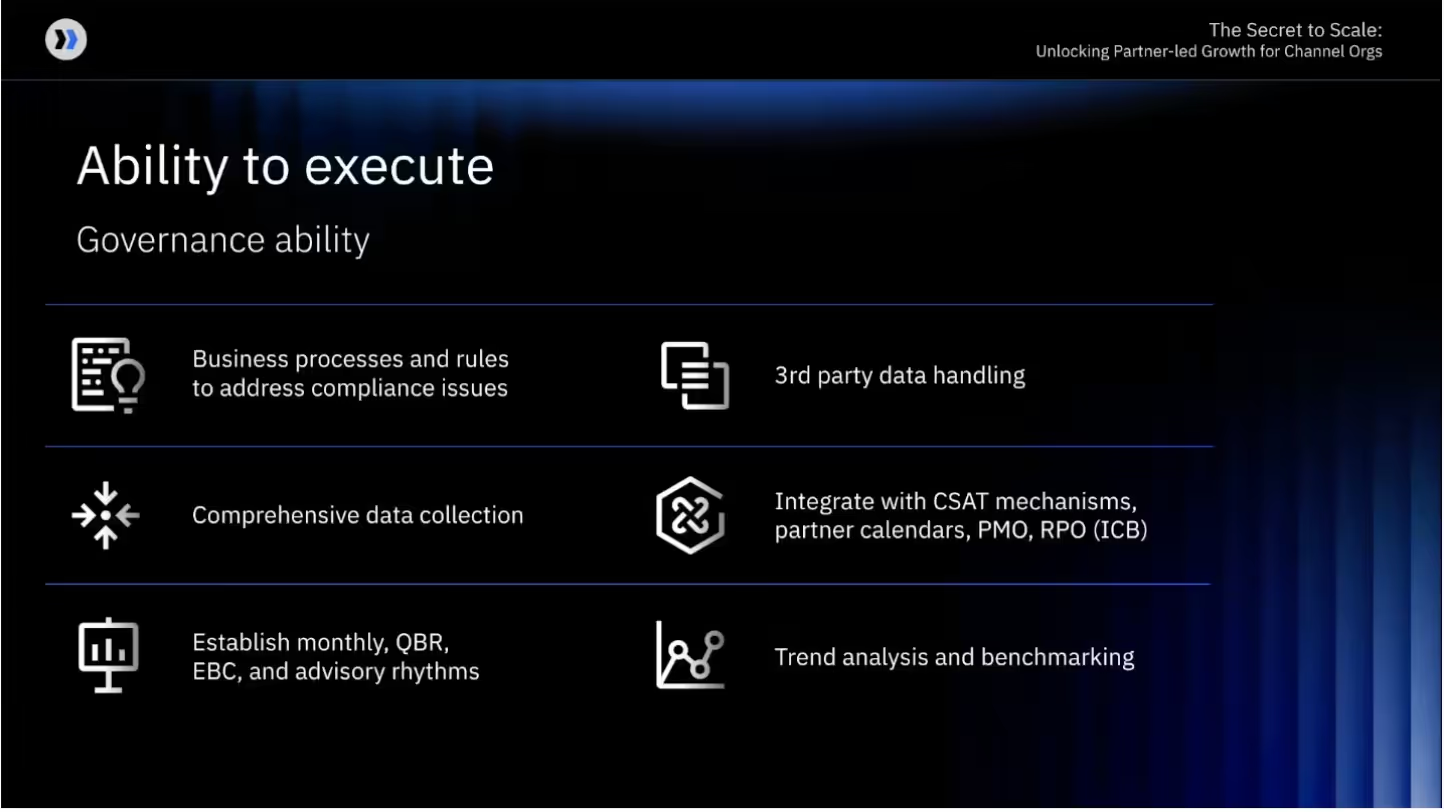
Resource and cross-functional mapping
Cross-functional mapping is not just a checklist; it's a dynamic and interwoven strategy that ensures a holistic and effective channel program. By strategically aligning with sales, service leaders, product management, specialized engineering, and finance and legal teams, organizations can navigate the complexities of the channel landscape and drive sustained success.
1. Sales and service leaders
At the core of channel success is a strategic alignment with sales and service leaders. Without buy-in from these leaders at each geographic location, the channel strategy falters. The commitment must be top-down, emphasizing the crucial role of a Chief Partner Officer in orchestrating this alignment. For global partners, a tailored approach is essential, necessitating a unique internal relationship structure. Aligning business development teams with account-focused counterparts becomes vital, ensuring a seamless collaboration that resonates with partners' diverse needs. The recruitment of versatile individuals with hybrid skills, such as business development professionals with marketing capabilities, is a key component of forming high-performing, diverse teams on a global scale.
2. Product management
Engaging with product management is another critical facet of the channel strategy. The lifecycle of an opportunity against the partner channel demands collaboration with product management. The complexity of post-sales areas requires a nuanced approach that involves working closely with product managers. This collaboration extends beyond issue resolution to building relationships, ensuring transparency during product launches, and providing partners with exclusive insights. The diversity of input from partners contributes significantly to refining products based on real-world market needs.
3. Specialized engineering/ practices
The specialized engineering or practices domain, encompassing professional services, support, and customer success, is a pivotal area for channel success. This segment requires its own set of metrics and distinct training approaches, differing from pre-sales dynamics. The collaboration with these specialized teams is essential throughout the opportunity lifecycle, ensuring seamless execution. This approach requires strategic planning, especially when dealing with diverse technology stacks. A close partnership with these teams is imperative for a successful and cohesive channel strategy.
4. Finance and legal
Collaboration with finance and legal teams is indispensable for various reasons. Whether negotiating new contracts, adjusting existing ones, or ensuring compliance, a strong partnership is crucial. The agility to adapt contracts and budgets to changing circumstances ensures the sustainability of the channel strategy. Working closely with finance and legal teams also plays a vital role in team-building, global events, and meetings, providing opportunities for valuable interactions with customers and partners.
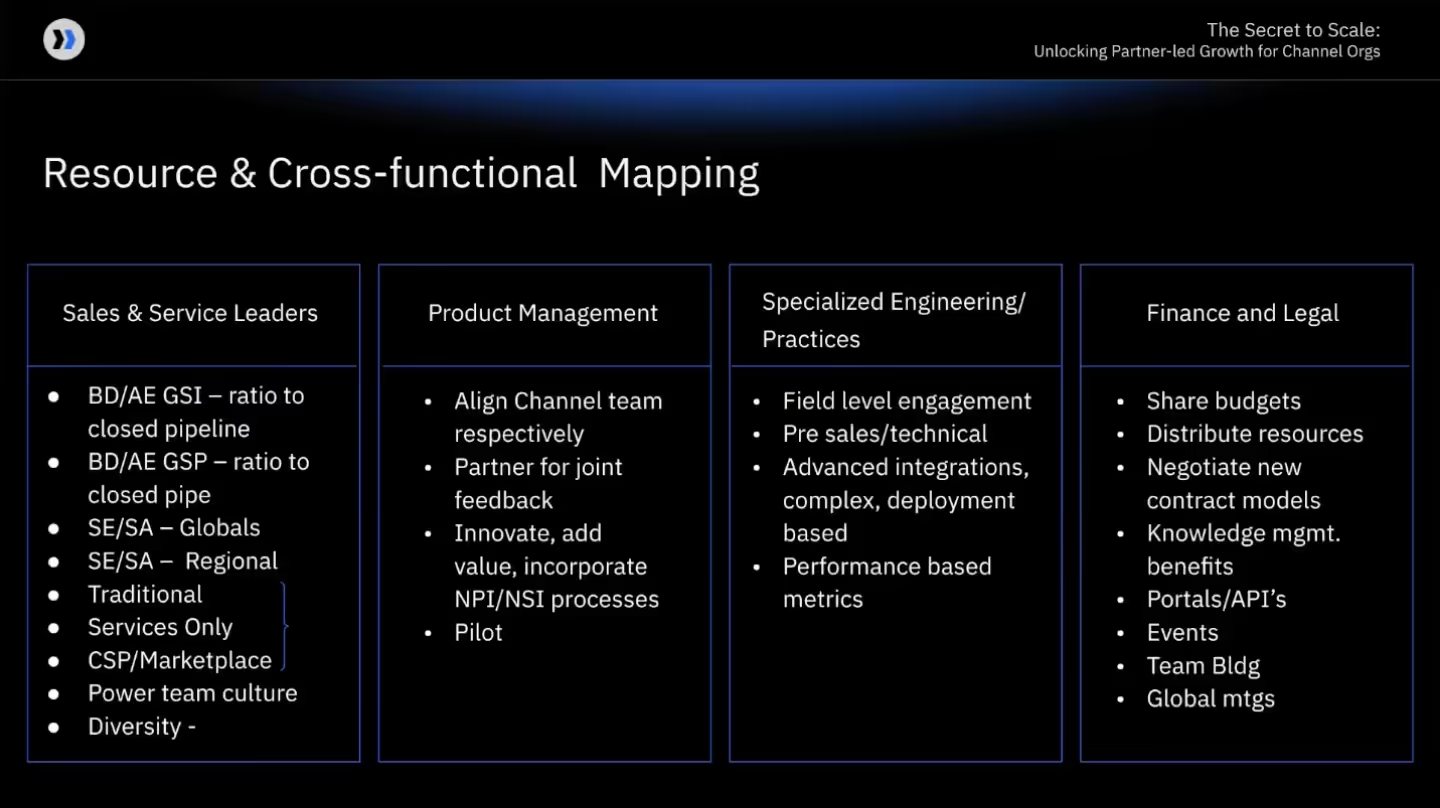
Building a world-class partner ecosystem
Building a world-class partner ecosystem requires a top-down approach, starting with executive vision and core philosophy. The organizational structure and considerations for outsourcing follow suit, ensuring alignment and efficiency. Funding strategies, both internal and external, along with a well-structured two-year plan, lay the groundwork for success.
Financial modeling and cost structures are crucial, aligning with business imperatives and gaining commitment from the CEO and CFO. Tailored selling motions and cohesive strategies across partner types, segments, and initiatives form the building blocks. Processes, tools, and system integration create a solid foundation, culminating in customer validation through targeted data collection.
This strategic pyramid, when meticulously executed, fosters high customer satisfaction—a testament to a resilient and world-class partner ecosystem. This strategic approach, incorporating executive vision, organizational structure, financial planning, and customer validation, forms the blueprint for a resilient and world-class partner ecosystem that stands the test of time.
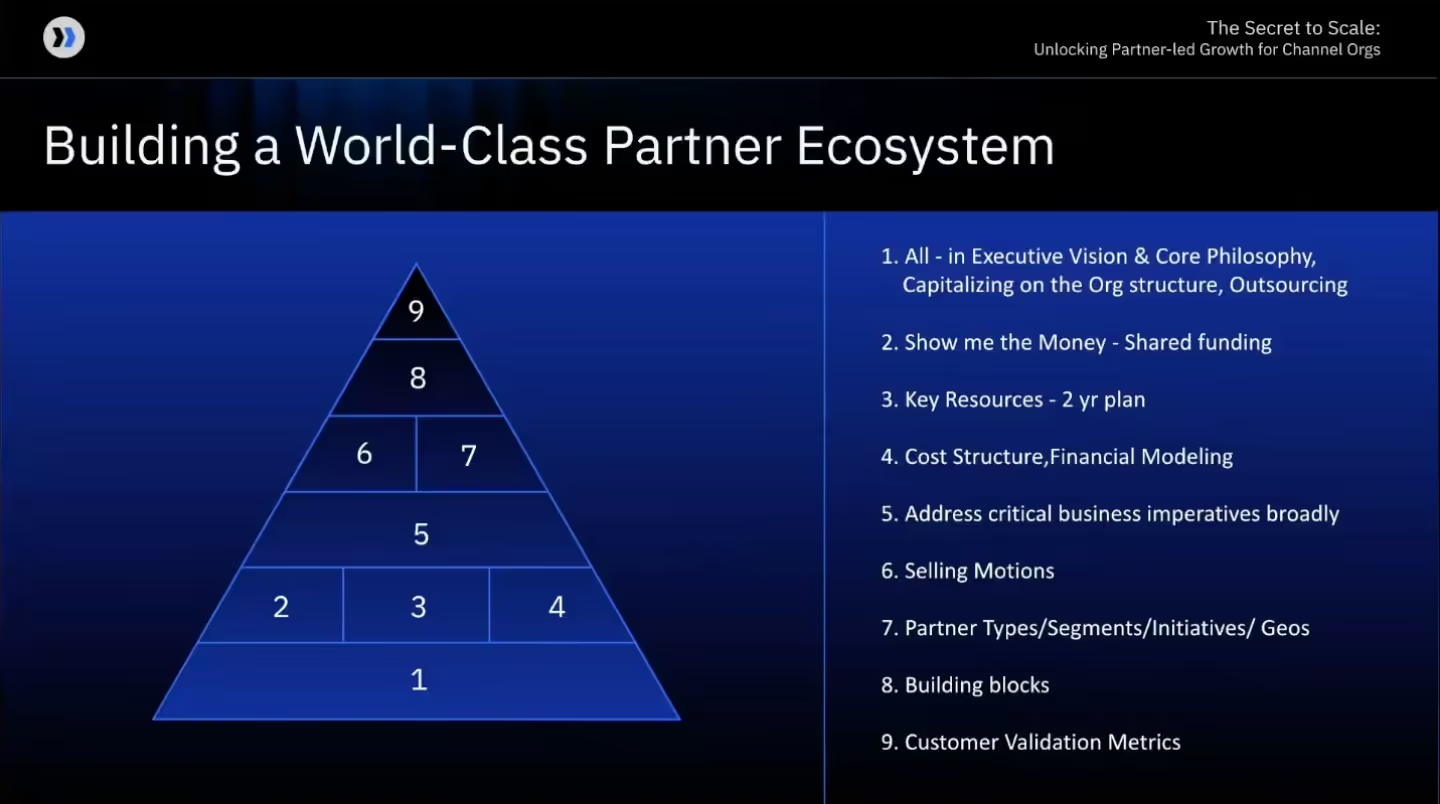
Leveraging technology for partner governance
Technology plays a pivotal role in partner governance. Organizations need to explore and leverage innovative technologies to streamline training and certification processes, enhance project reporting and monitoring, facilitate customer validation, and optimize revenue from products and services. By integrating technology into your partner ecosystem, you can elevate governance, foster collaboration, and contribute significantly to the success of your partner program.
1. Training and certification
To solidify your partner ecosystem, invest in a comprehensive training and certification system. Certifications need not be daunting; they can be cost-effective and flexible. It provides partners with a stamp of credibility, assuring customers of their capability. This is a worthwhile investment that fosters partner trust and commitment.
2. Project reporting
Treat every partner project as an opportunity and closely monitor its progress. Project reporting is not just about tracking tasks; it's a crucial element for ensuring successful deployments and maximum margin realization. Adopt data-driven dashboards to gain insights from partner activities, leading to informed decision-making and continuous improvement.
3. Customer validation
The ultimate goal is customer satisfaction. Regularly seek and validate customer feedback to ensure your products and services meet or exceed expectations. A satisfied customer not only validates your efforts but also becomes an advocate, driving future business. Customer validation is the Holy Grail, emphasizing the end goal of your partner ecosystem.
4. Products and services revenue
Products and services revenue go together. Just as channel leaders collaborate with various stakeholders, product and service teams must work hand-in-hand. Regular focus on optimizing the interplay between products and services is crucial for your partner ecosystem's overall health and sustained growth.
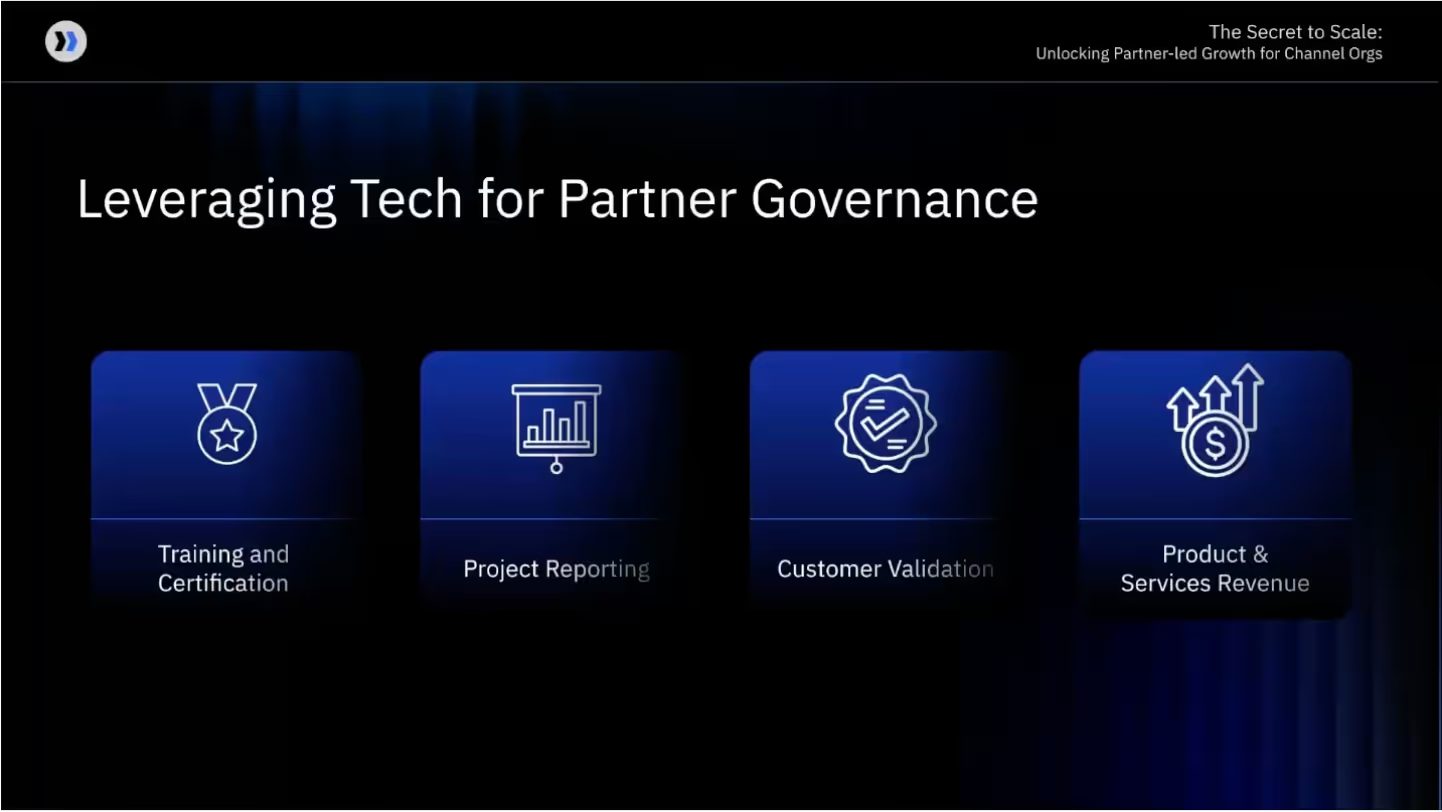
How Rocketlane can help with your partner program initiatives
Rocketlane’s Partner Central helps with setting up your partner program and lets you streamline your partner processes.
1. Managing access and profiles
Rocketlane provides end-to-end management, giving you control over your partners. Create, manage, and assign seats and licenses while maintaining granular control over their system access. With granular access control, ensure partners have access to all that’s required for consistent and successful project execution.
2. Invite partners to projects
Once you have created partner companies on Rocketlane, you can efficiently invite partner companies to projects, transforming Rocketlane into a multi-party collaboration tool. Set varying levels of access—from permissive to restricted—tailored to your needs. This ensures seamless interfacing with both clients and partners on a single platform.
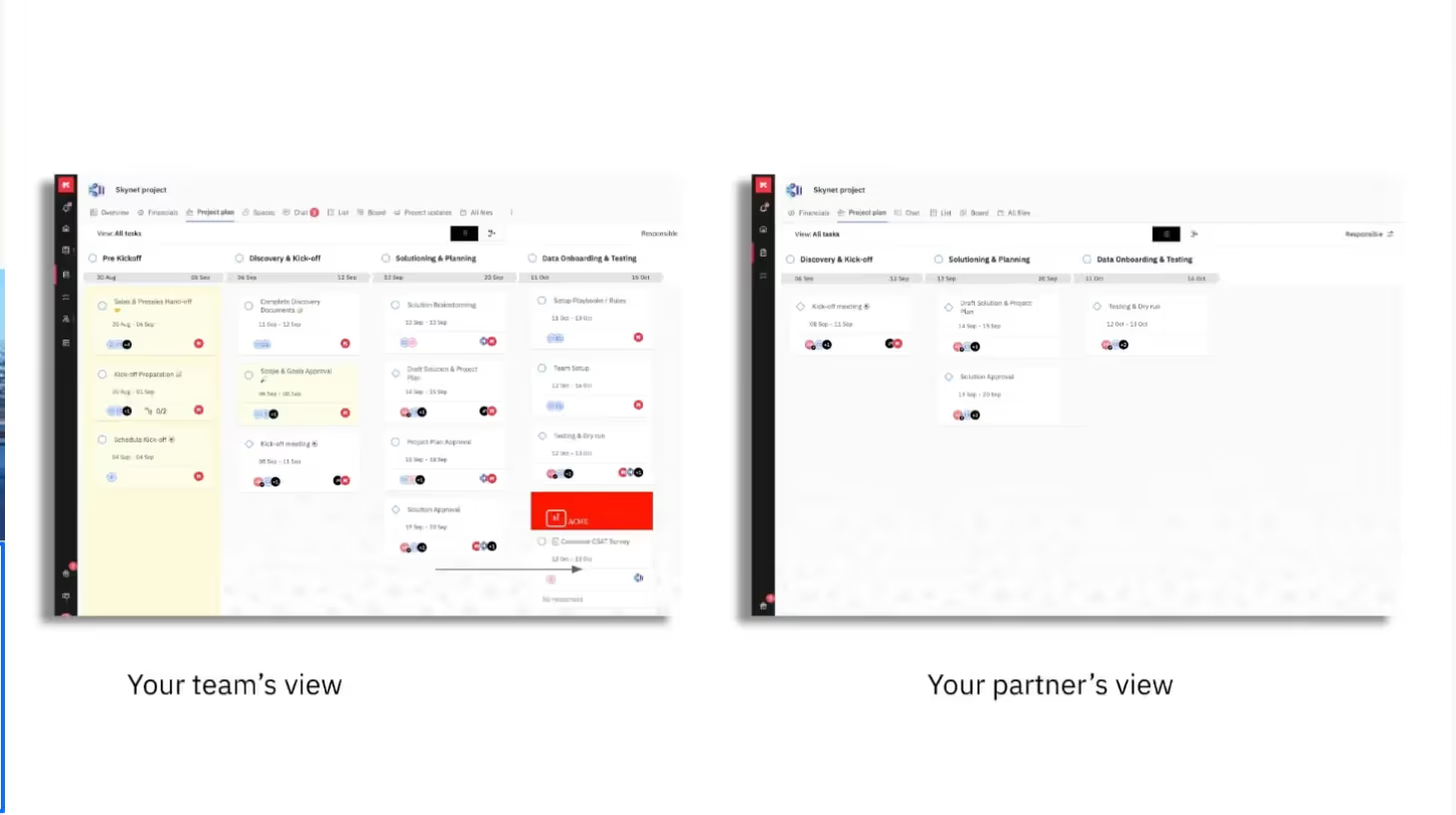
3. Monitoring and execution
Monitor project execution effortlessly with Rocketlane's view management. Easily create monitoring views tailored to your needs, such as tracking overdue milestones. The Kanban board simplifies weekly stand-ups, making meetings with partners seamless.
4. Partner governance
With Rocketlane’s new automation module, escalations, and partner governance become simple and smooth. Define SLA (Service Level Agreement) matrices, receive reminders for overdue tasks, and manage marketing effectively. Ensure tasks are completed on time, enhancing the overall governance structure, all within Rocketlane.
5. Insights and dashboards
Rocketlane's flexible module allows the creation of real-time dashboards tracking various metrics. Monitor ARR status by partner companies, identify revenue risks, and ensure projects stay on track. The platform also facilitates real-time CSAT surveys, providing insights into partner performance.
Beyond inputs like milestone management and CSAT scores, Rocketlane also enables monitoring of project outputs. You can track product adoption, account health scores, and project setups. You can also analyze data points to enhance collaboration and learn from partner contributions with Rocketlane.
Elevate your partner program by seamlessly managing processes, ensuring efficient collaboration, and gaining valuable insights for continuous improvement with Rocketlane.
Q&A
- Where can we find resources on partner success programs?
For comprehensive insights on partner success, try exploring the library of free materials at TSIA (Technology Services Industry Association). It's a valuable resource where you can find expert perspectives and dive deeper into specific topics.
- How should you approach partners if you're working in a lean organization? Is it best to go all out or start with small experimentation? How can you validate the idea of working with partners?
Starting with partners in a lean organization may seem overwhelming, but remember, everyone starts somewhere. Whether you're a small company or a global giant, the key is commitment from the top. ‘All in’ looks different for each, but the commitment to invest and align the entire business toward shared goals remains constant. Regardless of size, commit (and invest) to starting today. Then, focus on ongoing refinement and leveling up for sustained growth.
- How frequently should partner check-ins happen? Should it be on a monthly basis or a quarterly basis?
The frequency of check-ins depends on the nature of the partnership. Monthly and quarterly check-ins with channel teams and partners are recommended for more nuanced and specific measurements. Annual gatherings provide a broader overview and alignment. However, it is crucial for channel teams to interface regularly with partners, ensuring effective collaboration and shared goals without burdening other teams.
What other industry experts have to say about partnering and partner-led growth
Peter. B, Practice Director for Core Security Solutions at Worldwide Technology
Peter emphasizes the foundational elements of a profitable channel ecosystem. He believes that a well-orchestrated and functioning channel offers maximum cost savings for vendors and increased profitability for partners. He also underscores the importance of mutual investment in each other's success for a successful partnership.
Chris Mearns, Founder and CTO at Murdoch Webster Technology Group, Australia
Chris highlights the critical role of partnerships in the cybersecurity and networking space. From his experience, Chris describes how creating an ecosystem with diverse partners, each contributing unique skills, has made services more profitable. He emphasizes the efficiency gained by collaborating with partners who specialize in areas outside their expertise, providing customers with a broader range of skills and services.
Chris Yates, Director of Network Security Services, CyberOne Security
Chris Yates expresses the instrumental role a robust partner ecosystem played in building his practice at CyberOne. He specifically credits Palo Alto Networks for their commitment to the channel and partner relationships, highlighting how it contributed to the development and growth of their partnership. Chris attests to the value of strong partnerships in the success of any business.


